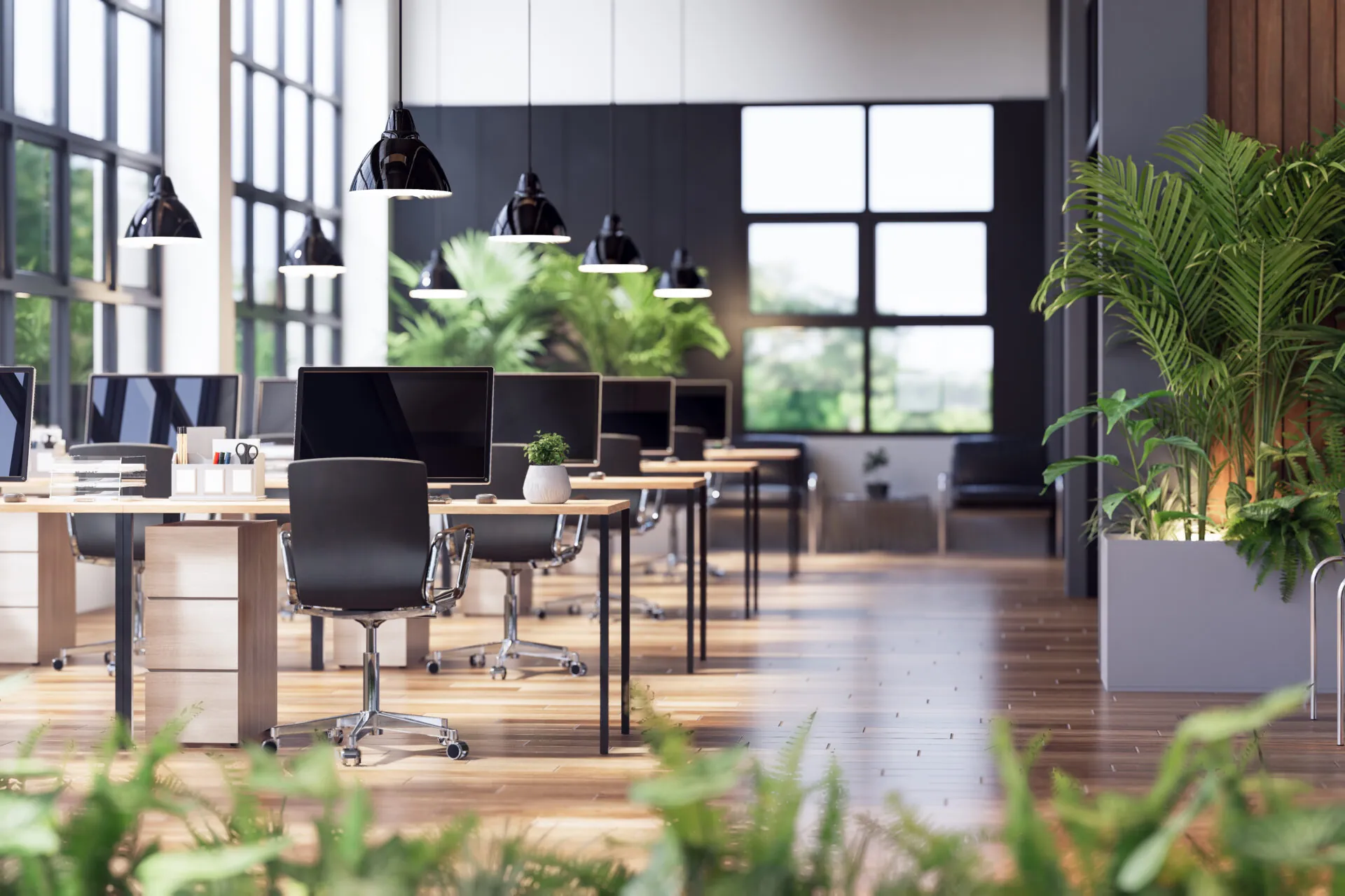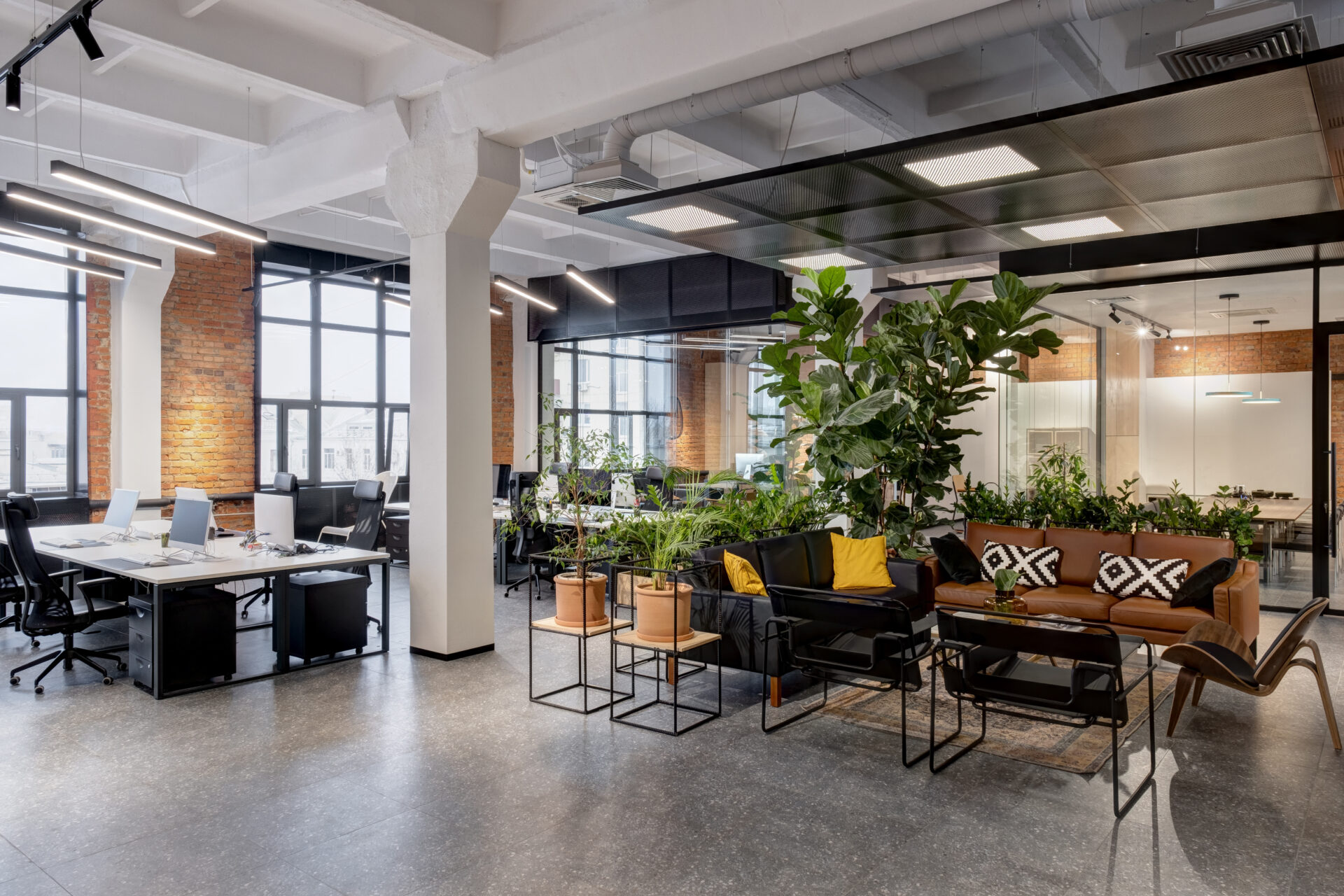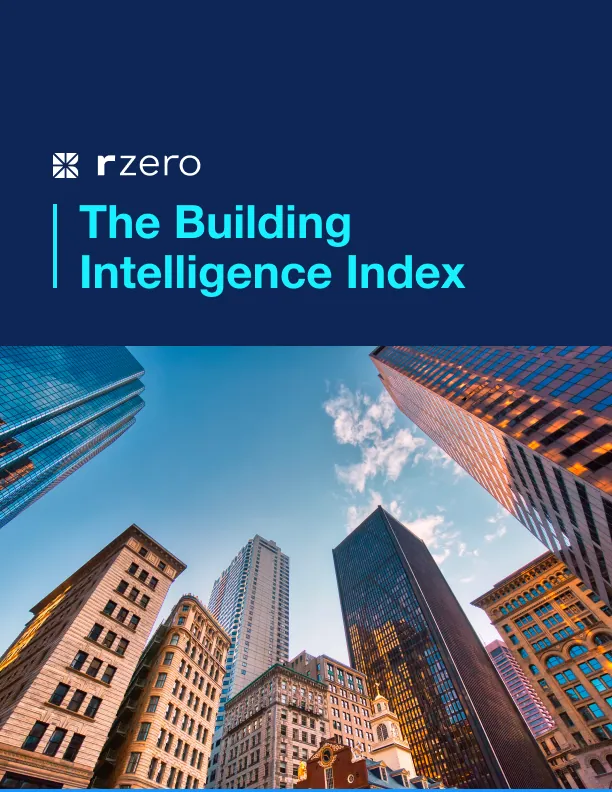
How Workplace Environment Affects Employee Productivity
It’s the basic question that every manager or business owner needs to answer: “What can I do to help my employees be more productive?” However, recent studies have shown that question may already be answered by the time your employees first set foot in their workspace. Factors like temperature, lighting, and noise can have a drastic effect on your employees’ mood and even overall health, and even the design of your office can make it easier or harder to work. By controlling these factors, a business can noticeably increase its productivity while promoting a healthy, incentivized workforce.
How a Workspace Affects Employee Performance
It may seem like a no-brainer that people don’t like to work in spaces that are noisy, cramped, dimly lit, too hot or too cold. There are many statistics to illustrate just how big of a concern these factors affecting employee performance are, however. A survey by office space retailer Staples found that a whopping 80% of workers find lighting to be a very important aspect of their workplace, while a further 40% deal with inadequate lighting at work. Similarly, 50% of respondents to a UK survey found offices to be too hot in the summer and too cold in the winter.
Issues like poor lighting have been found to cause impaired reading and clerical errors, as well as physical ailments like headaches and eyestrain. An uncomfortable climate, whether too hot or too cold, has been linked to lethargy, irritability, and a lack of focus or motivation. Noise, especially, has been shown to be a major distraction in office environments. However, some workers have shown that they dislike both excessive noise and complete silence in equal measure, making it a crucial yet difficult factor to monitor. All of these workplace conditions can add up and cause serious drops in productivity—sometimes by as much as 85%.
How to Increase Employee Productivity in the Workplace
The physical layout of an office or workspace can alleviate or worsen these productivity-draining factors, and attempts have been made in the past to improve workplace conditions by redesigning the entire office space.
The original “cubicle farm” layout of the past century sought to increase productivity by segregating employees into individual workspaces to cut down on distractions like extended conversations or background noise. However, issues like isolation from face-to-face contact, impeding lighting and airflow, and diminished oversight are all long-established drawbacks of this design.
In the mid 2000’s, many companies began adopting open floor plans as a way to make their workplaces seem more inviting while increasing employee accountability. However, the liabilities of these plans have been more recently noted, including a Harvard study that found open floor plans decrease face-to-face collaboration by 70% and actually cause more distractions at work.
The current best-practice for a workspace is somewhere in the middle: a hybrid floor plan allowing for both open collaboration and individual concentration when needed. In fact, it’s been reported that 85 percent of office professionals believe flexible workplace design is important and 83 percent said they have their best ideas when working in flexible space options. However, finding the balance between a space that encourages collaboration, one that allows for privacy, and one that is physically comfortable at the same time can be a real challenge.
How Sensors Can Improve Workplace Efficiency
Smart tools like R-Zero’s workplace occupancy monitors can help your business create the ideal work environment by managing your space and utilities more efficiently. Using infrared radiation and long lasting battery life, R-Zero’s motion sensor counter is discreet additions to a workspace that allow office managers to see which rooms, desks, meeting rooms, or workspaces are occupied at a given time. This allows for minute control over office usage, and gives your employees a way to find the space that works for them.
Balancing temperature and air flow between different parts of a building is a technical challenge, but R-Zero’s office space analytics can distinguish between occupied and unoccupied rooms and can direct heat or cold to specific parts of the building. Other utilities like lighting can also be adjusted to operate based on occupancy, meaning that energy is used efficiently for individualized needs—meaning your employees can stay as comfortable as they need to complete their work while actually saving costs.
Smart sensors also allow for the full benefits of a hybrid floor plan model. R-Zero’s people-counting sensors can accurately monitor how many people are present in a meeting room or other collaborative space, allowing for increased accountability for managers while allowing employees to work together comfortably. Alternatively, If a worker needs to find a quiet space to take a phone call or focus on a specific task, R-Zero’s app or other software using R-Zero’s API integration can anonymously display unoccupied workspaces at a glance, eliminating guesswork while still protecting their privacy.
By controlling the environmental factors and physical space of your office using analytics generated by R-Zero’s occupancy data, you can more accurately provide for your employees’ comfort and create optimal working conditions for a diverse workforce—increasing productivity and saving money in the process.
More posts you might like
-

Why should I improve indoor air quality (IAQ) & indoor environmental quality (IEQ) in my buildings?
The Importance of Healthy Indoor Air Quality Clean air and proper ventilation indoors is crucial for the creation of high-performance work places, classrooms, and healthcare environments. It’s also essential in fostering comfort, productivity, and well-being for your building occupants. Imagine walking into a building optimized for health and comfort. The air feels fresh and light. […]
-

How to Improve Indoor Air Quality in Your Buildings
As a building owner or operator, ensuring optimal indoor air quality (IAQ) in your spaces is essential for the well-being and productivity of your tenants and occupants. To help you get started, here’s a guide to ensure you are meeting indoor air quality standards across your real estate portfolio. Understanding Indoor Air Quality Standards To […]
-

The importance of indoor air quality testing in office buildings
In today’s workplace, ensuring a healthy and productive environment for employees is crucial. One of the most significant factors influencing workplace well-being is indoor air quality (IAQ). As part of our focus on smart buildings, R-Zero offers advanced indoor air quality testing solutions like the R-Zero IAQ Monitor, designed specifically for enhancing occupant comfort and […]

